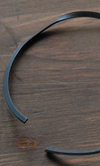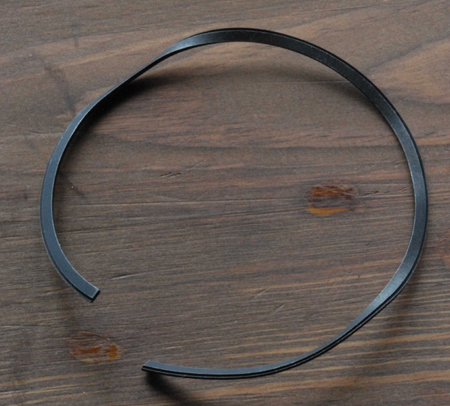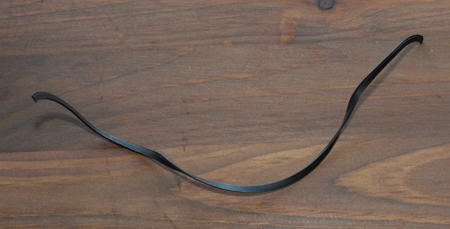The ductile iron ring
 Lest you think Fig. 1 here is the remnant of some form of horrific engine blow-up, let me explain that what you are looking at is a ductile iron piston ring. Twisted and bent to all manner of shapes the resulting contortion demonstrates vividly how flexible the material can be.
Lest you think Fig. 1 here is the remnant of some form of horrific engine blow-up, let me explain that what you are looking at is a ductile iron piston ring. Twisted and bent to all manner of shapes the resulting contortion demonstrates vividly how flexible the material can be.
Ductile iron comes from a class of materials referred to as SG (spheroidal graphite) irons. Similar in composition to the grey cast-irons used in older type piston ring technology, the carbon flakes in grey cast-iron have been converted into a round, nodular form, inhibiting the formation of micro-cracks and making the resultant iron considerably more ductile and very much less brittle.
As a result, however, it loses much of its bearing properties, so to regain these certain modifying elements are included along with suitable heat treatment processing. The result is a centrifugally cast thick-walled tube reminiscent of a cylinder liner, that can be machined and split into individual rings on a normal lathe.
The more usual method of production these days is to cast individual units on a sprue, very much like a Christmas tree. Cast from round with the free-end gap after machining, when the end gaps are brought together the ring is perfectly round.
This is fine when you are making thousands of rings of, say, a nominal 4 in or 83 mm size diameter. But when making a ring or set of rings for a non-standard bore, as in the case of Omega Pistons of Halesowen, England, the options for manufacture are suddenly reduced.

In such cases, the above cast thick-walled tube is machined on a normal lathe, and the free-end gap cut using a very thin blade. The thin, C- shaped products are subsequently placed on a mandrel and heat treated to produce the permanent set we expect from an open ring. The individual rings are then finish-machined and an external profile - whether it be a barrel, taper or Napier scraper - is introduced. All told, from ingot to finished product, some 14-15 operations are needed.
Using such methods, small batches of rings can be made for non-standard pistons. The resulting rings - be they top, secondary or oil control - will be as good as, if not better than, a standard cast-iron one, and considerably stronger.
Extremely hard-wearing ductile iron rings will work directly on any of the usual bore materials without the need for any coating. They will work in a plain iron bore, a chromium-plated bore or a Nikasil bore. And above all, they don't break!
They may not be quite as good as the best steel rings but for most applications they are more than adequate. For example, they were fitted to a team of rally raid vehicles recently, and after 6,500 very tough kilometres the cars finished first, second and third with no hint of any engine issues.
According to the maker, the only limitation is the width of the ring, as anything over 1.2 mm wide will produce too high a radial tension. Because of this limitation the radial depth has to be made smaller in order to open it up sufficiently for it to go over the crown of the piston and into the ring groove.

And if you think the ring is not flexible enough, Fig. 2 shows it before I curled it back to roughly ring shape again.
Fig. 1 - The ductile iron piston ring
Fig. 2 - Before being curled back to ring shape
Written by John Coxon